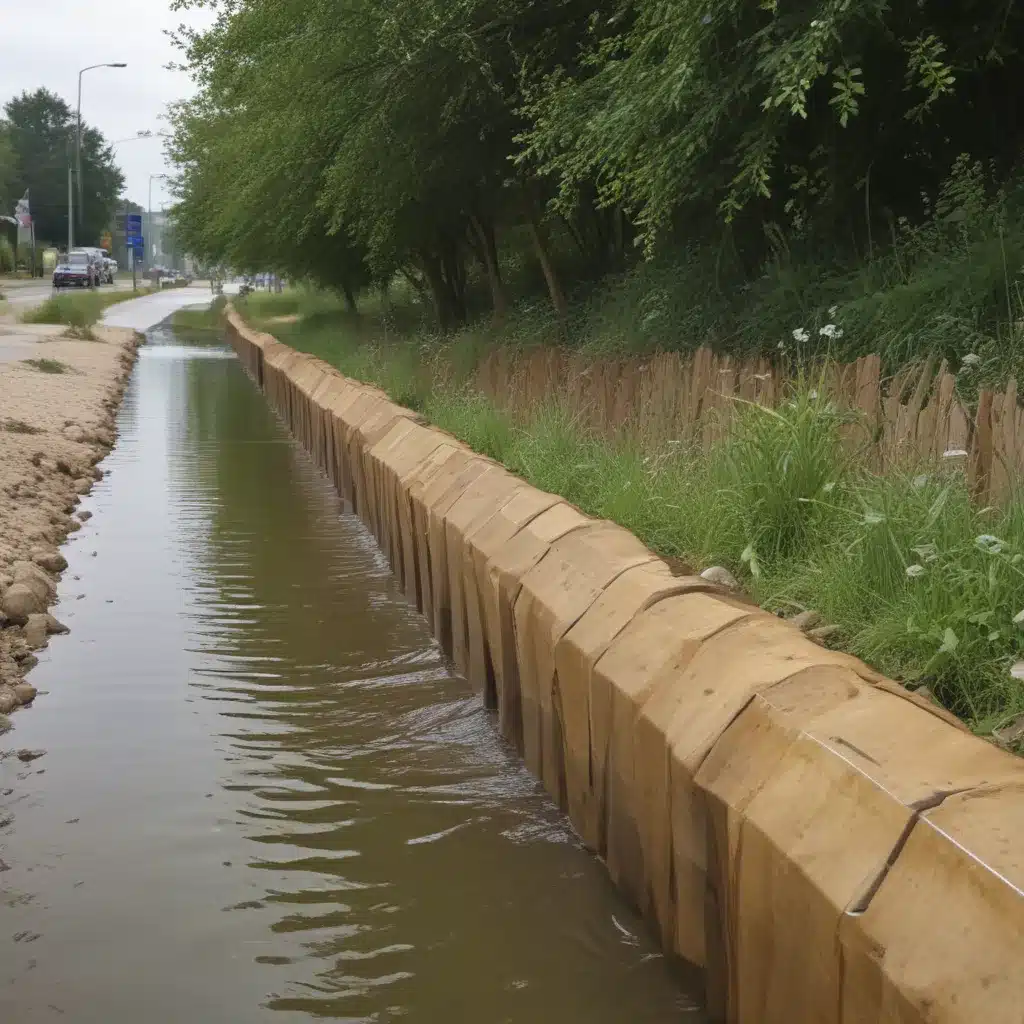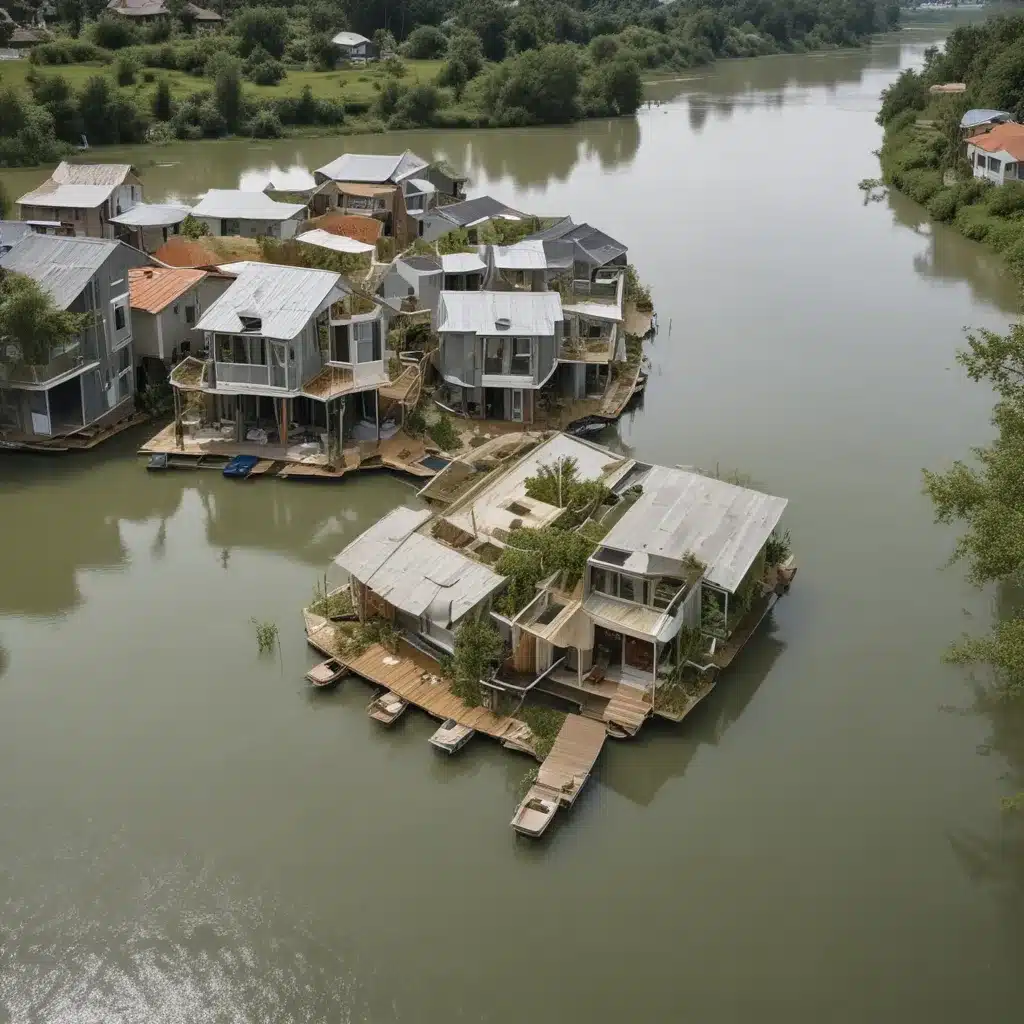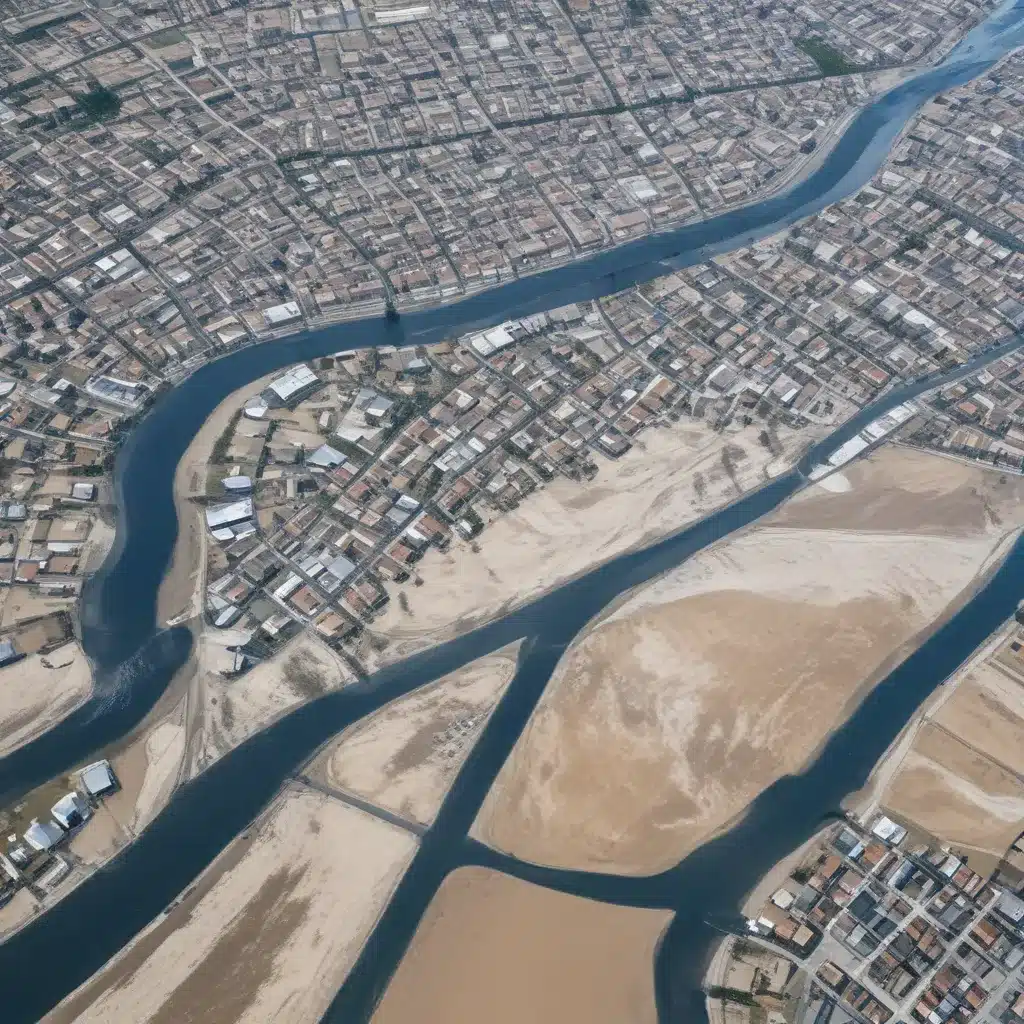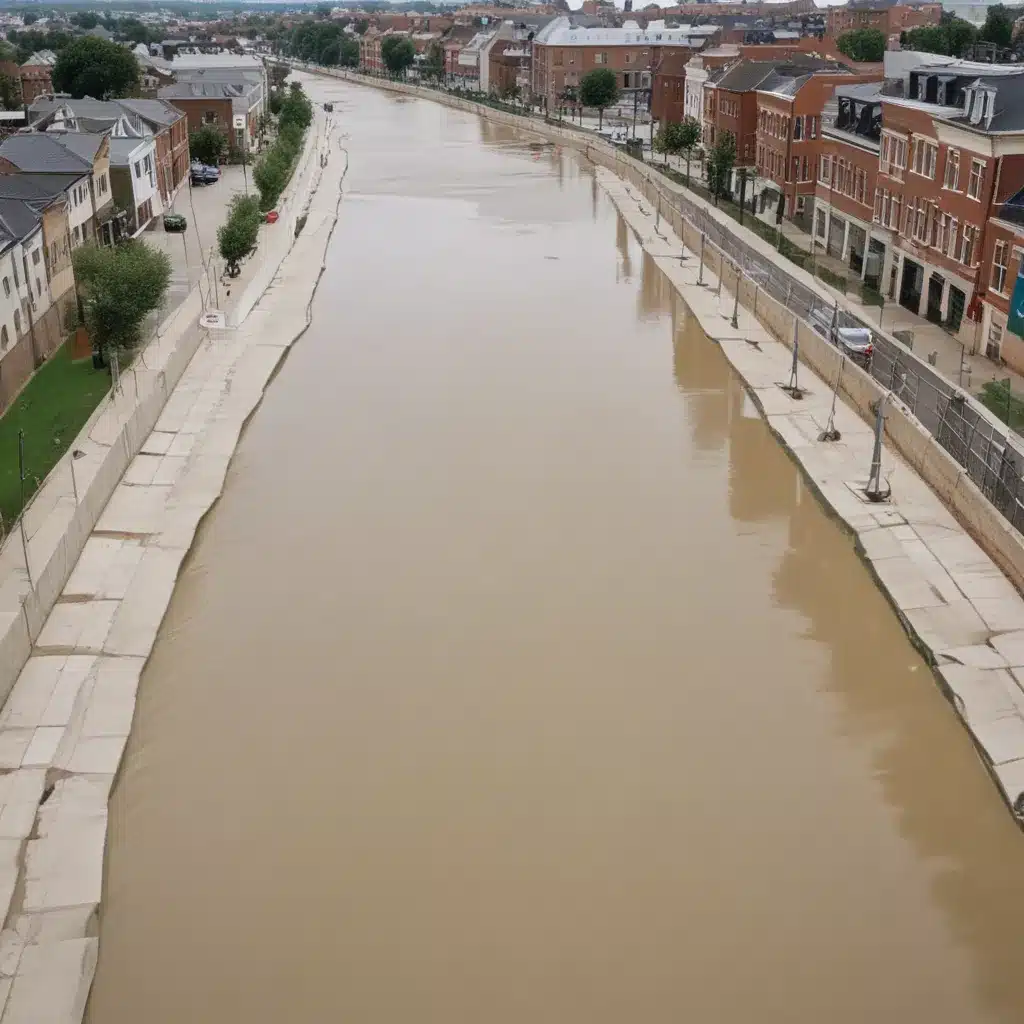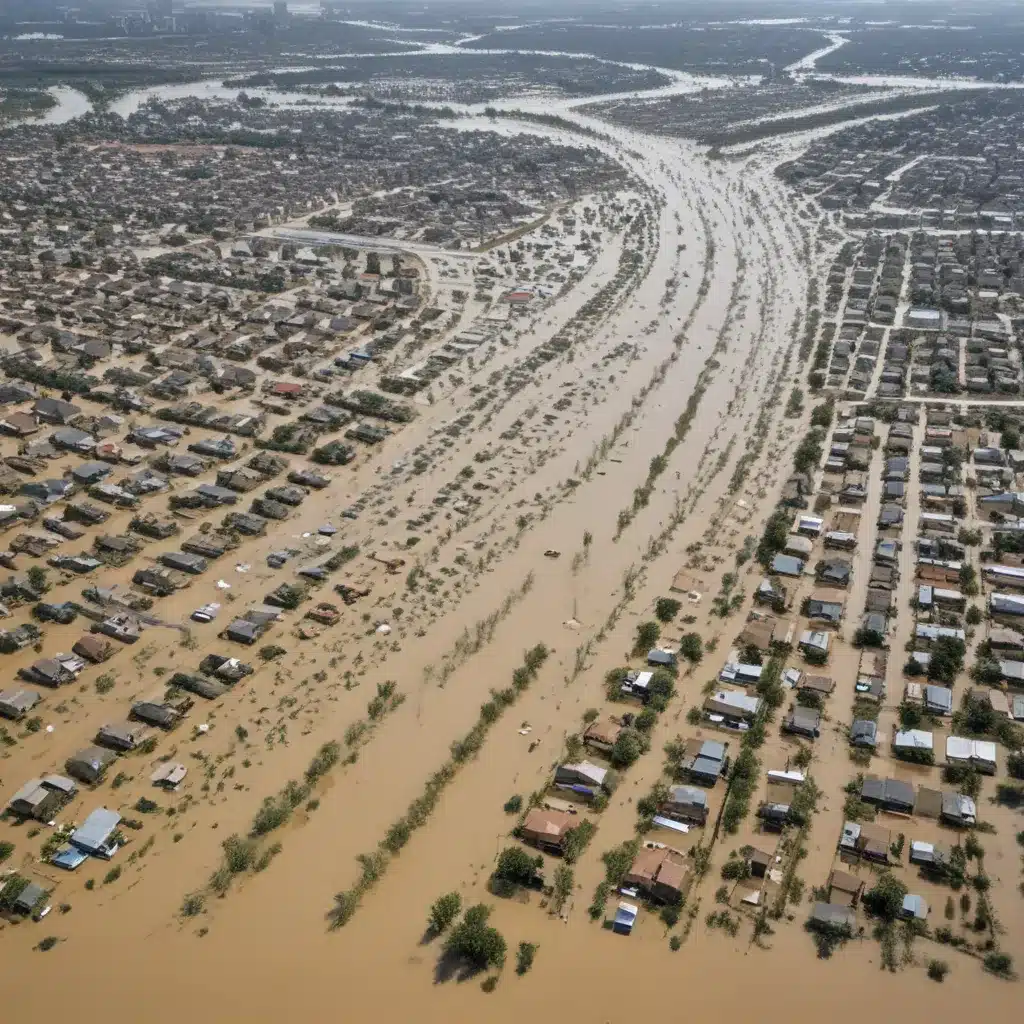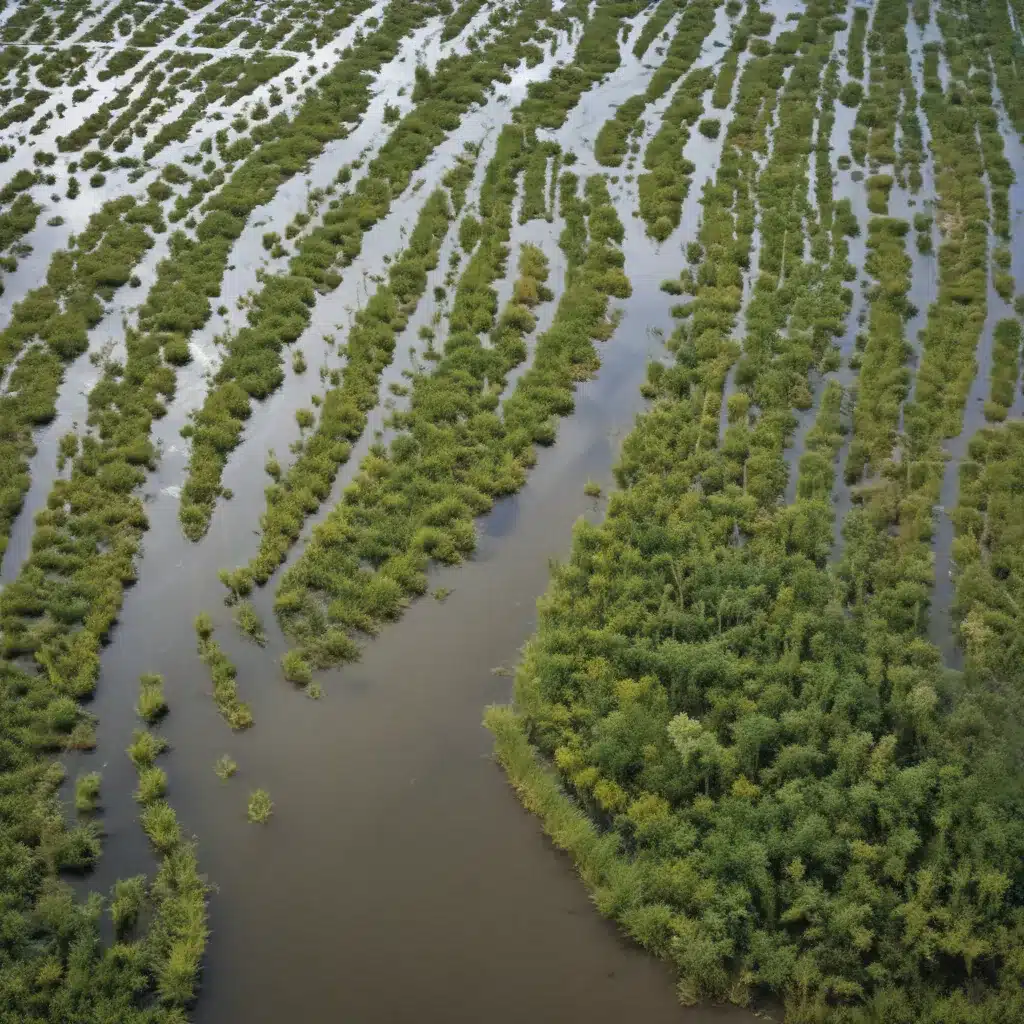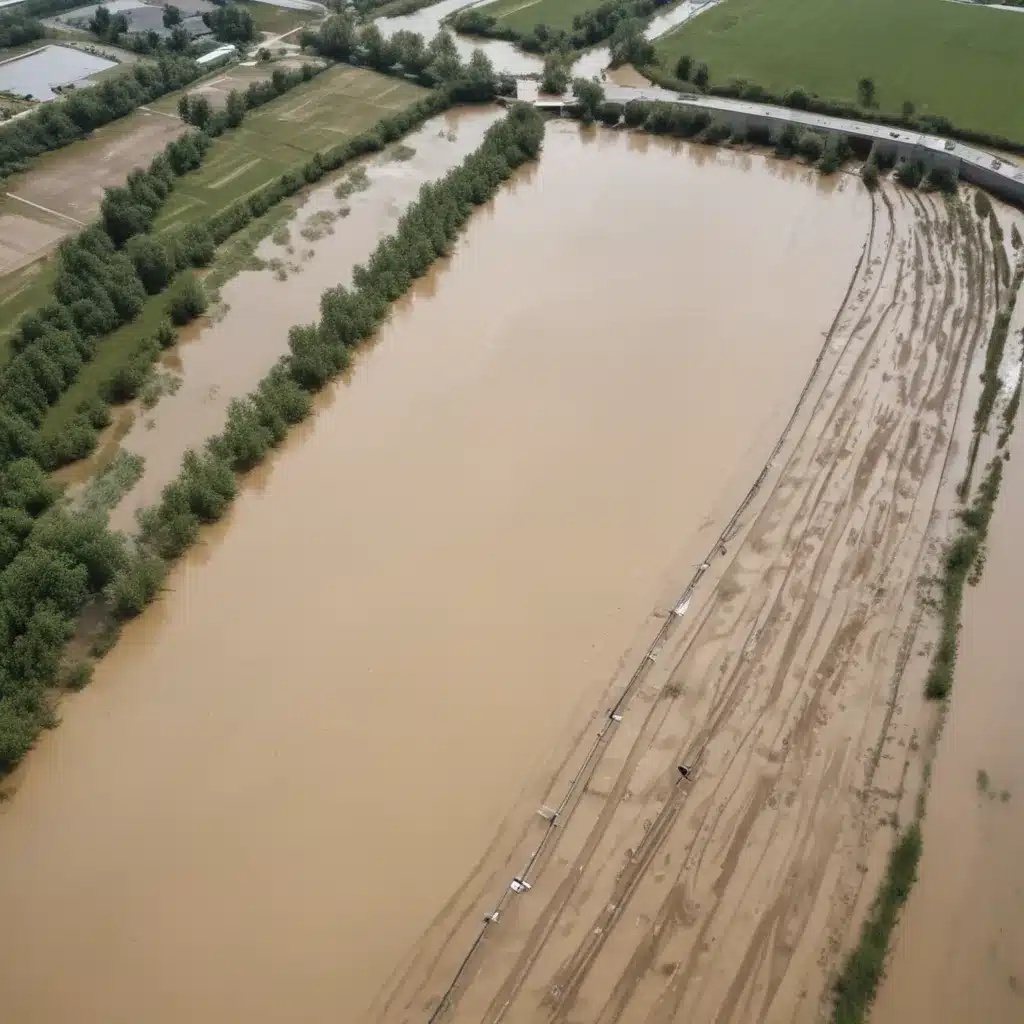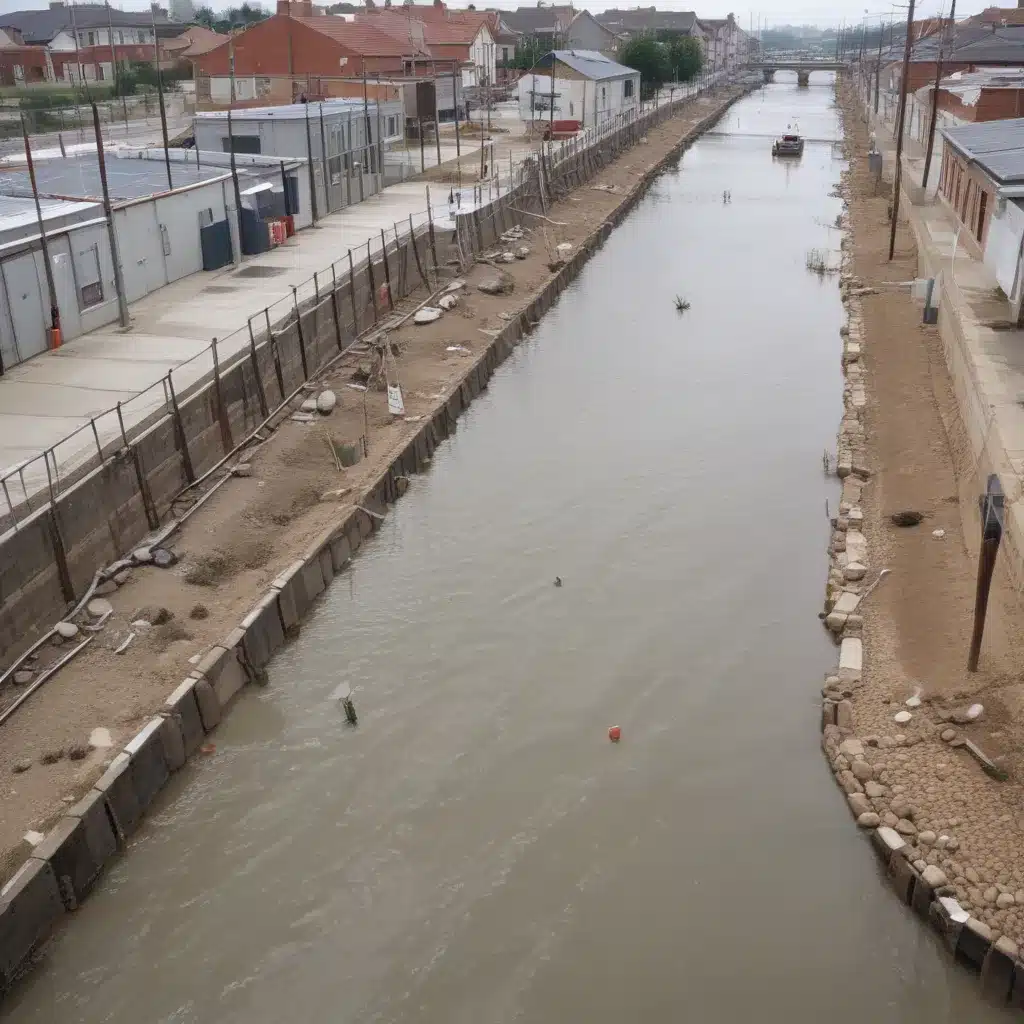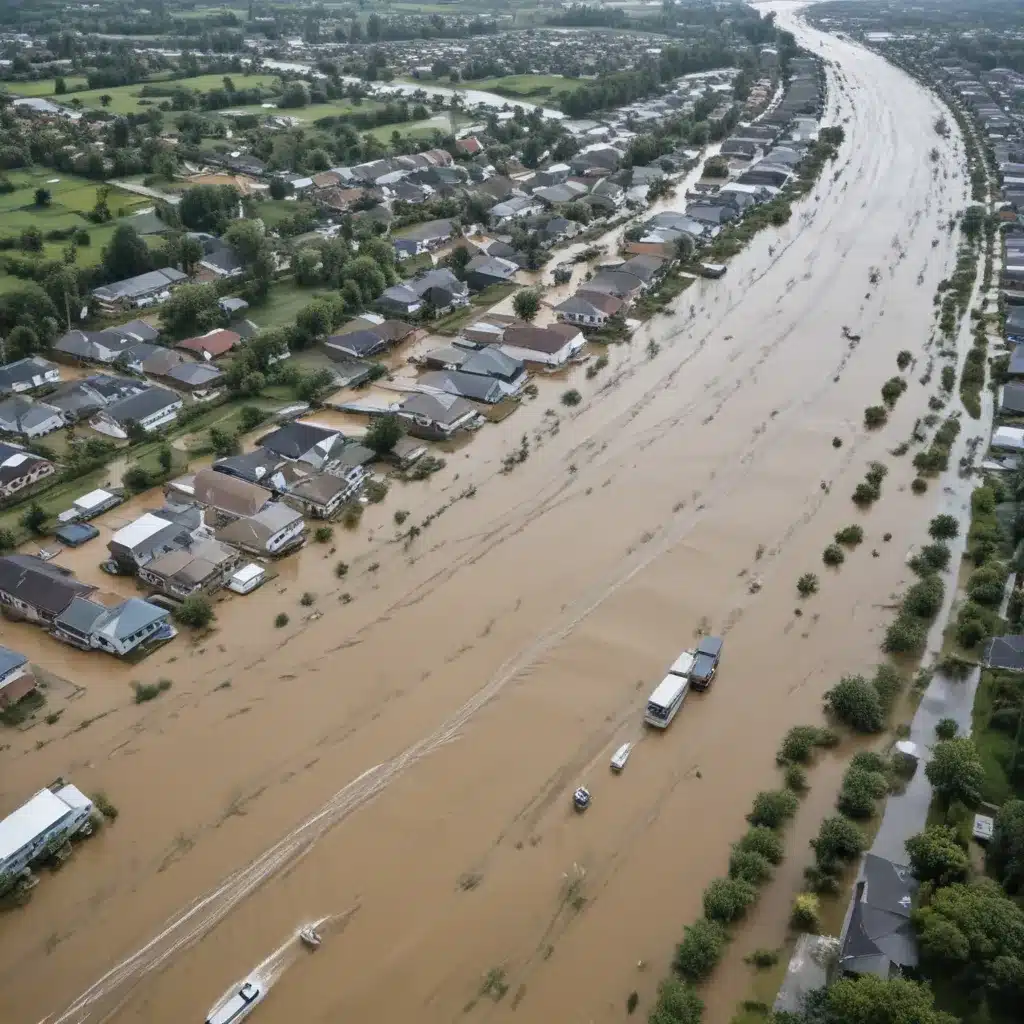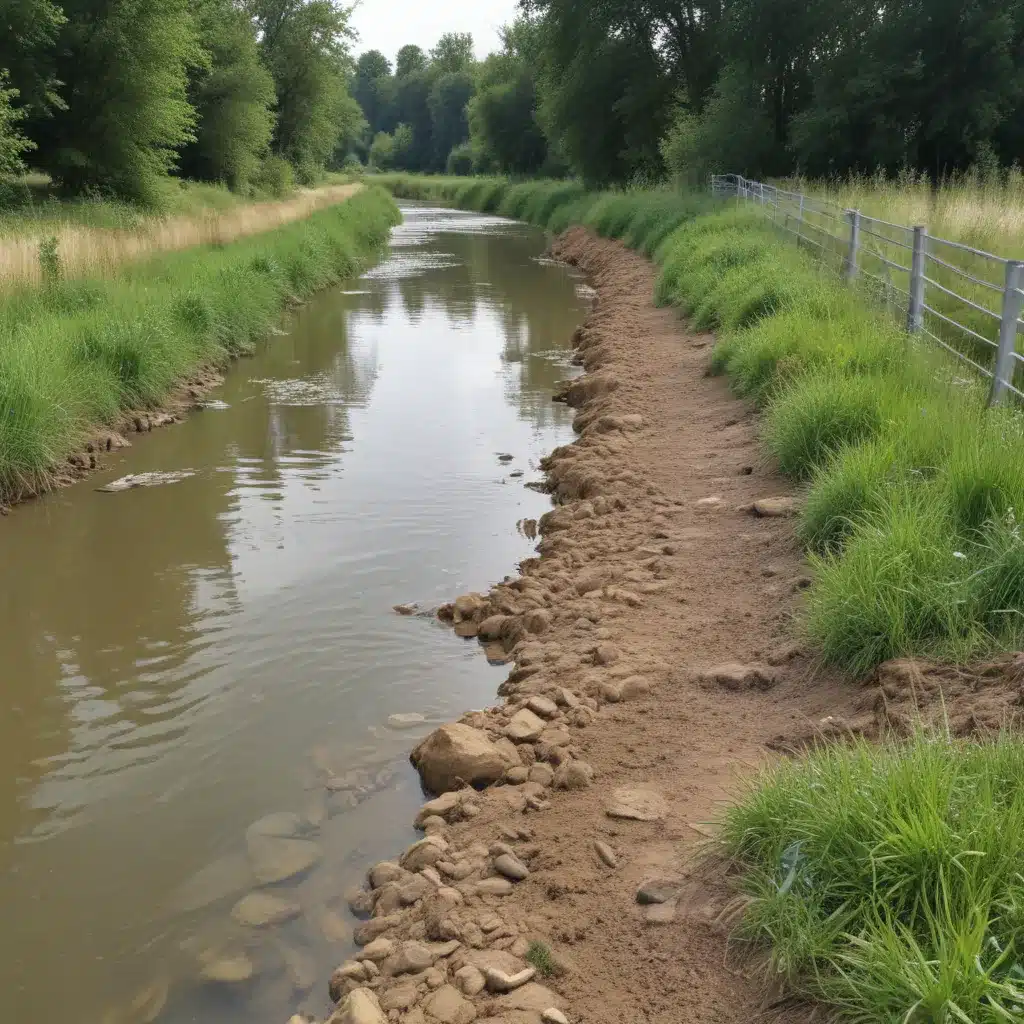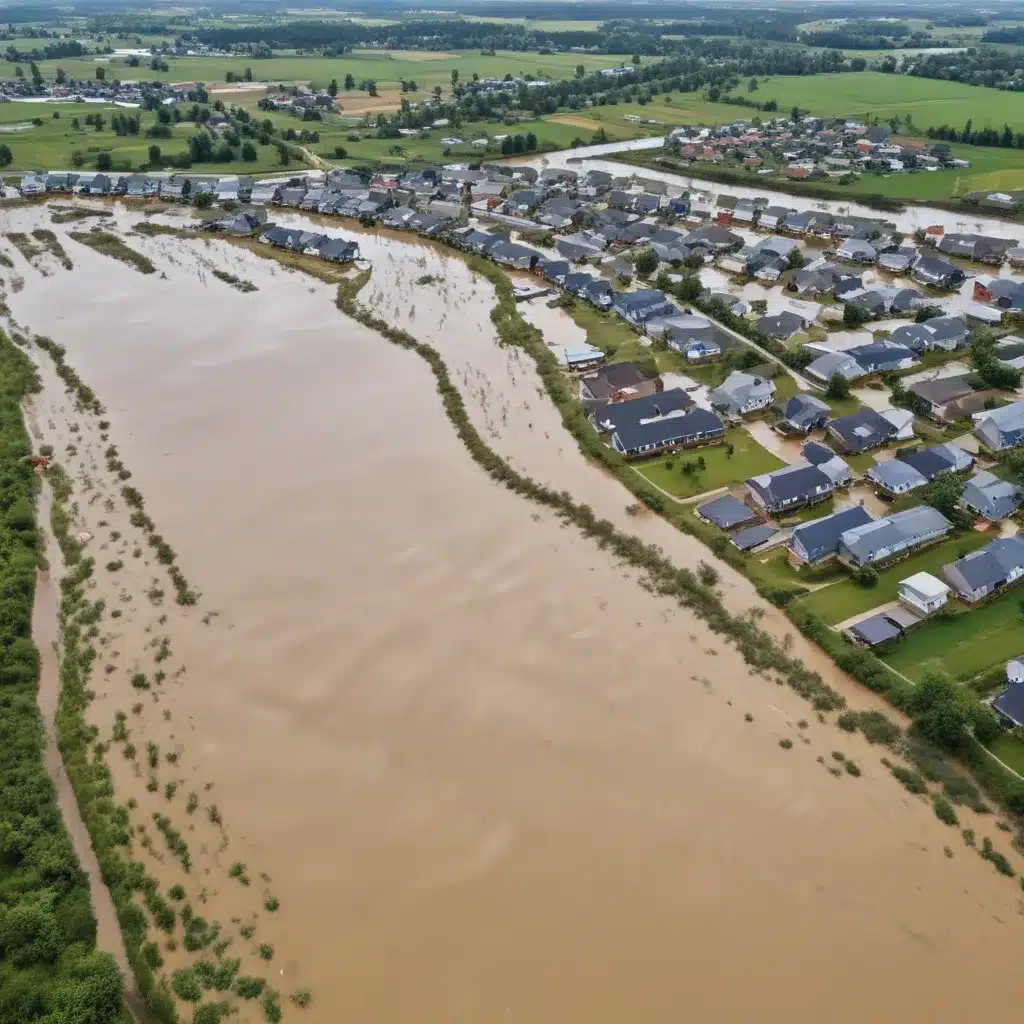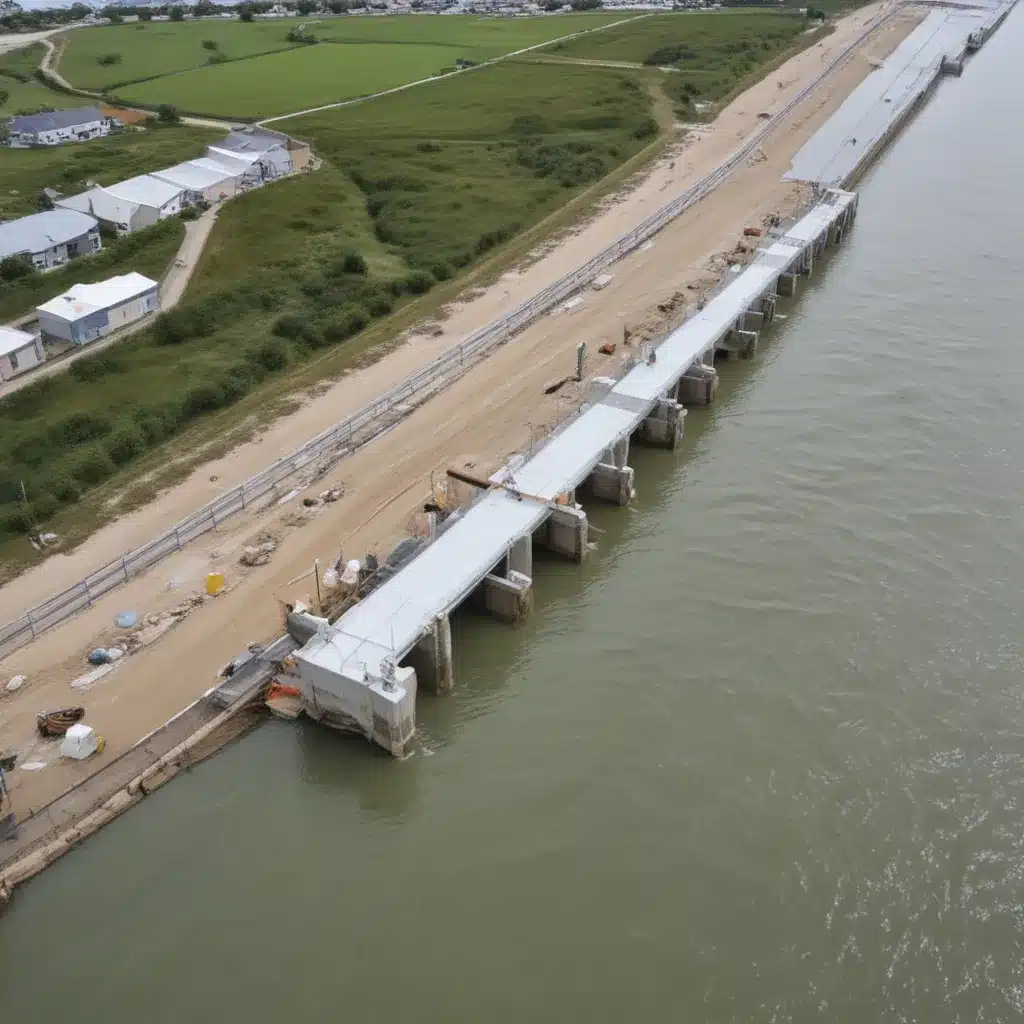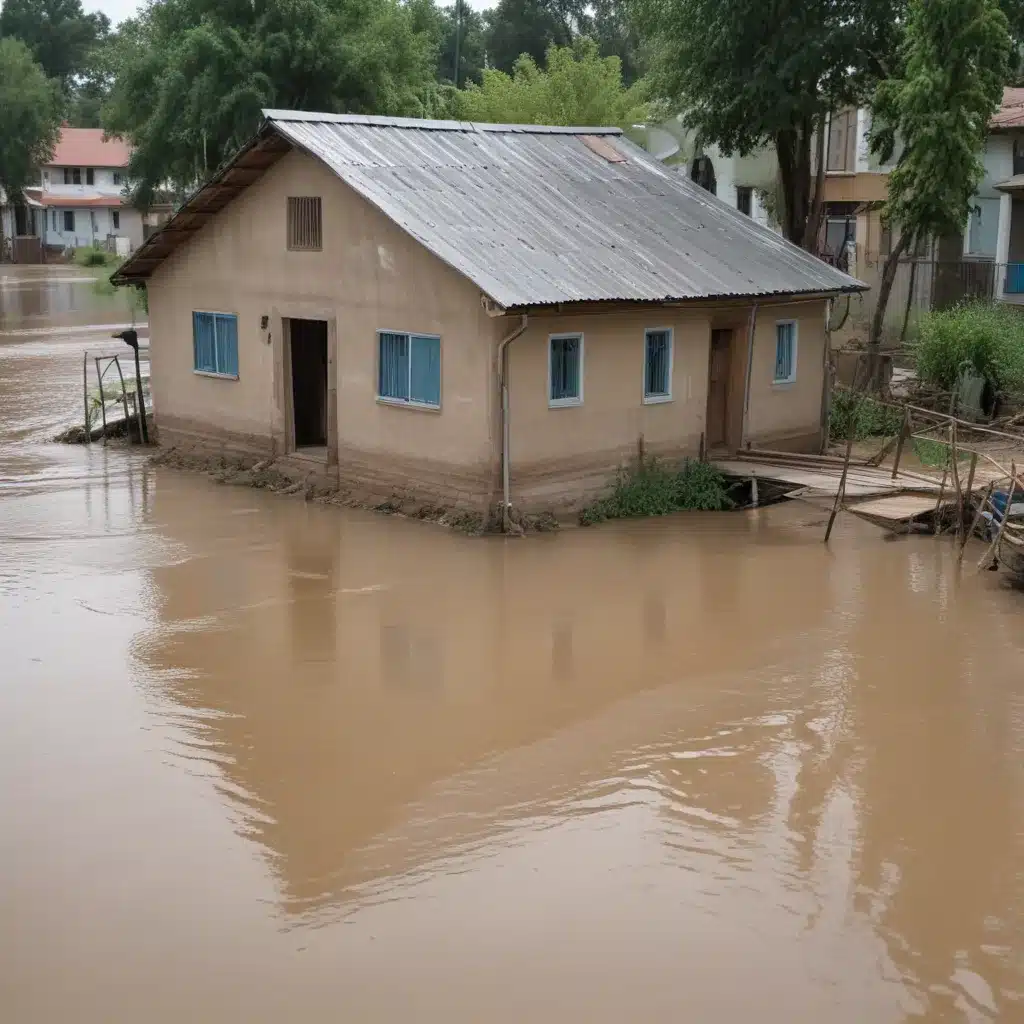In the realm of flood management, where the forces of nature clash with the ingenuity of human minds, the science of hydrology stands as a steadfast guardian. It is a discipline that has witnessed remarkable evolution over the years, constantly adapting to the ever-changing dynamics of water and weather. From its humble beginnings as a means to understand the behavior of rivers and streams, hydrology has grown into a sophisticated field that combines cutting-edge technology and data analysis to predict and mitigate the devastating impacts of floods. But what are the latest advancements in this evolving science? How do we accurately forecast flood events? And how can we effectively engage communities in flood management efforts? Let us embark on a journey through the fascinating domain of hydrology, where answers to these questions await.
Key Takeaways
- Hydrology plays a crucial role in effective flood management.
- Advanced technology and data analysis have revolutionized hydrology, enabling proactive flood management.
- Understanding water flow dynamics is essential for designing effective flood management strategies.
- Climate change and urbanization pose challenges, but collaboration and nature-based solutions offer opportunities in flood management.
Importance of Hydrology in Flood Management
Hydrology plays a crucial role in effective flood management. As hydrologists, our role is to understand the behavior of water in various environments and use this knowledge to make data-driven decisions for flood management. In today’s rapidly changing climate, innovative approaches are needed to mitigate the impacts of flooding and protect communities.
One of the key responsibilities of hydrologists is to collect and analyze data to assess the risk and potential impact of floods. By studying rainfall patterns, river flow rates, and soil moisture levels, we can develop accurate models that predict flood events. These models enable us to make informed decisions regarding flood response, such as issuing early warnings and implementing evacuation plans. Thus, hydrologists play a vital role in ensuring the safety of communities in flood-prone areas.
Data-driven decision making is at the heart of effective flood management. By utilizing advanced technologies such as remote sensing, satellite imagery, and sophisticated computer models, hydrologists can gather and analyze vast amounts of data in real-time. This allows for more accurate flood forecasting and improved emergency response strategies.
Furthermore, hydrologists collaborate with engineers, urban planners, and policymakers to develop innovative flood management solutions. By integrating hydrological data into urban planning processes, we can design infrastructure that is resilient to flooding. This may include constructing flood barriers, creating green spaces to absorb excess water, or implementing sustainable drainage systems.
Historical Perspectives on Hydrology
As we explore the historical perspectives on hydrology, it is important to understand how our understanding of water behavior has evolved over time. Through historical analysis, we can gain insights into the cultural influences that have shaped our understanding of hydrology and its role in flood management.
Hydrology, the study of water and its movement on Earth has been a subject of fascination for centuries. From ancient civilizations to modern societies, humans have sought to understand and harness the power of water. In the early days, hydrology was primarily driven by the need to predict and manage floods, which have always been a threat to human settlements.
To illustrate the evolution of our understanding of hydrology, let’s take a look at the following table:
| Era | Key Developments |
|---|---|
| Ancient Civilizations | Observation of flood patterns and attempts at prediction |
| Renaissance | Introduction of mathematical models for flood forecasting |
| Industrial Revolution | Advancements in data collection and analysis techniques |
| Modern Era | Integration of remote sensing and computer modeling |
Throughout history, our understanding of hydrology has been influenced by various cultural factors. For example, ancient civilizations developed sophisticated irrigation systems to manage water resources and mitigate floods. Renaissance thinkers introduced mathematical models to improve flood forecasting, and the Industrial Revolution brought advancements in data collection and analysis techniques.
Today, we continue to innovate in the field of hydrology, integrating remote sensing technologies and computer modeling to enhance our ability to predict and manage floods. By studying the historical perspectives on hydrology, we can learn from the past and build upon the knowledge of our predecessors to develop innovative solutions for flood management in the future.
Advances in Technology and Data Analysis
With advancements in technology and data analysis, we have witnessed significant progress in our ability to understand and manage water behavior for flood management. Advanced sensor technology has revolutionized our ability to collect real-time data on various hydrological parameters such as precipitation, river flow, and groundwater levels. These sensors, equipped with cutting-edge technology, provide accurate and timely information that helps us make informed decisions in flood management.
Machine learning applications have also played a crucial role in enhancing our understanding of hydrological processes. By analyzing vast amounts of data collected from sensors and other sources, machine learning algorithms can identify patterns and relationships that were previously difficult to uncover. This enables us to develop more accurate models for predicting floods, assessing flood risks, and designing effective flood mitigation strategies.
One of the key advantages of advanced sensor technology and machine learning applications is their ability to provide real-time and predictive information. This allows us to take proactive measures in flood management, such as issuing early warnings, optimizing the operation of reservoirs and flood control structures, and coordinating emergency response efforts. By integrating data from multiple sources and applying advanced analytics, we can now anticipate flood events with greater accuracy and take timely actions to minimize their impacts.
Furthermore, the continuous improvement and miniaturization of sensor technology have made it possible to deploy sensors in previously inaccessible areas, such as remote mountainous regions or underground aquifers. This expanded coverage allows us to gather data from a wider range of locations, improving our understanding of the entire hydrological system and enhancing our flood management capabilities.
Understanding Water Flow Dynamics
Having established the importance of advanced sensor technology and machine learning in flood management, we now turn our attention to understanding the dynamics of water flow. To effectively manage floods and mitigate their impacts, it is crucial to have a deep understanding of how water moves through different environments. This understanding is achieved through water flow analysis and hydraulic modeling, which provide valuable insights into the behavior of water during flood events.
To shed light on the complexities of water flow dynamics, consider the following key points:
- Interactions with natural and built environments: Water flow is influenced by various factors such as topography, vegetation, and man-made structures. Understanding how these elements interact with water is essential for designing effective flood management strategies.
- Flow velocity and direction: By analyzing water flow patterns, we can determine the velocity and direction of water movement. This information is critical for predicting flood extents and identifying areas at high risk.
- Channel and river behavior: Hydraulic modeling allows us to study the behavior of channels and rivers under different flow conditions. It helps us comprehend how water interacts with riverbanks, sediment transport, and the formation of meanders or floodplains.
- Impact of floodplain storage: Floodplains act as natural storage areas during flooding, reducing the peak flow downstream. Analyzing the capacity and behavior of floodplains helps us understand their role in flood attenuation.
- Influence of urbanization: Urban areas alter the natural flow patterns of water due to impervious surfaces and the presence of drainage systems. Studying the effects of urbanization on water flow dynamics is crucial in flood-prone regions.
Predicting Flood Events With Accuracy
When it comes to predicting flood events with accuracy, there are three key points to consider: advanced modeling techniques, real-time data collection, and early warning systems. By utilizing advanced modeling techniques, we can simulate different scenarios and assess potential flood risks. Additionally, real-time data collection allows us to gather up-to-date information on rainfall, water levels, and river flow, enabling us to make more accurate predictions. Lastly, early warning systems play a crucial role in alerting communities and giving them enough time to evacuate and prepare for potential floods.
Advanced Modeling Techniques
Advanced modeling techniques revolutionize flood management by accurately predicting flood events. These techniques are at the forefront of innovation in the field, offering new ways to understand and manage the complexities of floods. Here are five key benefits they provide:
- Improved flood forecasting: Advanced models incorporate vast amounts of data and use innovative monitoring techniques to provide more accurate and timely flood forecasts.
- Enhanced risk assessment: These models allow for a comprehensive analysis of flood risks, considering various factors such as rainfall patterns, topography, and land use.
- Effective emergency response: By accurately predicting flood events, advanced modeling techniques enable authorities to take proactive measures, such as evacuations and resource allocation, to mitigate the impact of floods.
- Efficient flood mitigation strategies: These models help in the development of targeted and effective flood management strategies, including the design of infrastructure and floodplain zoning.
- Long-term planning and adaptation: Advanced modeling techniques assist in understanding the long-term impacts of climate change on flood patterns, enabling communities to plan and adapt accordingly.
Real-Time Data Collection
Real-time data collection plays a crucial role in accurately predicting flood events. In today’s age of innovation, real-time monitoring allows us to gather data continuously, providing us with up-to-date information on weather patterns, river levels, and soil moisture. This data-driven approach enables us to make informed decisions in flood management, leading to more effective and efficient response strategies.
Real-time monitoring allows us to track rainfall intensity, river flow rates, and other critical parameters in real-time. This data is then processed and analyzed to identify patterns and trends, helping us understand the potential for flood events and their severity. By integrating this information with advanced modeling techniques, we can create accurate flood forecasting models that aid in decision-making processes.
Data-driven decision-making empowers us to anticipate flood events, mitigate risks, and allocate resources more effectively. It allows us to respond proactively, enabling early warning systems and evacuation plans to be put in place. Real-time data collection is the foundation of our flood management strategies, providing us with the insights needed to protect lives and property in the face of natural disasters.
Early Warning Systems
How can we accurately predict flood events and provide early warnings? Early warning systems play a crucial role in flood forecasting, allowing us to anticipate and prepare for potential disasters. These systems utilize advanced technology and real-time data to analyze weather patterns, river levels, and soil moisture. By combining this information, we can generate accurate predictions and issue timely alerts to communities at risk. Here are five key components of effective early warning systems:
- Robust data collection networks: Reliable and comprehensive data collection systems ensure accurate forecasting and timely alerts.
- Advanced modeling techniques: Innovative modeling techniques enable us to simulate and predict flood events with greater accuracy.
- Integration of multiple data sources: Integrating various data sources, such as satellite imagery and ground-based sensors, enhances the accuracy and reliability of flood forecasts.
- Continuous monitoring and analysis: Real-time monitoring and analysis allow for quick detection of changes in flood conditions.
- Effective communication channels: Timely dissemination of warnings through multiple channels ensures that communities receive crucial information in time to take appropriate actions.
Role of Modeling Systems in Flood Management
Modeling systems play a crucial role in effectively managing floods. These systems utilize advanced modeling techniques to accurately predict and forecast flood events, enabling authorities to take proactive measures to minimize the impact on communities and infrastructure. By simulating the behavior of rivers, rainfall patterns, and other hydrological factors, these models provide valuable insights into flood dynamics and help inform decision-making processes.
One of the key components of flood management modeling systems is flood forecasting. This involves the use of mathematical models to predict the timing, magnitude, and extent of flooding in a specific area. By analyzing data such as rainfall intensity, river levels, and soil moisture content, these models can generate real-time forecasts that aid in issuing timely warnings and implementing necessary preventive measures.
To engage the audience and illustrate the importance of modeling systems in flood management, let’s take a look at a table showcasing the capabilities and benefits of these systems:
| Modeling System Features | Benefits |
|---|---|
| Accurate representation of hydrological processes | Enables precise flood forecasting and early warning systems |
| Integration of multiple data sources | Enhances the reliability and accuracy of flood predictions |
| Simulation of various flood scenarios | Allows for the evaluation of different flood management strategies |
As the field of hydrology continues to evolve, modeling systems are becoming increasingly sophisticated and innovative. They incorporate advanced algorithms, machine learning, and remote sensing technologies to improve the accuracy and efficiency of flood management. These advancements empower decision-makers to make informed choices and implement effective strategies to mitigate the devastating effects of floods.
Innovative Monitoring Techniques
Let’s talk about some innovative monitoring techniques that can greatly enhance flood management. One such technique is remote sensing technology, which allows us to gather valuable data from a distance using satellites and aircraft. Another technique is sensor network deployment, where a network of sensors is strategically placed to monitor various aspects of the hydrological system. These innovative approaches play a crucial role in improving our understanding of floods and enabling more effective flood management strategies.
Remote Sensing Technology
One of the most effective ways to monitor and manage floods is through the use of remote sensing technology. This innovative approach utilizes sensor technology and satellite imagery, allowing for real-time data collection and analysis. With remote sensing technology, we can gather information from inaccessible or hazardous areas, enabling us to understand the extent and impact of flooding more accurately. Here are five key benefits of remote sensing technology in flood management:
- Rapid response: Remote sensing provides immediate access to critical information, allowing for quick decision-making and response during flood events.
- Enhanced accuracy: By capturing data from multiple sensors and satellite imagery, we can obtain highly accurate and detailed flood maps, aiding in effective planning and evacuation strategies.
- Continuous monitoring: Remote sensing enables continuous monitoring of flood-prone areas, helping us detect early warning signs and mitigate potential risks.
- Cost-effective: Compared to traditional methods, remote sensing technology offers a more cost-effective solution for flood monitoring and management.
- Integration with other technologies: Remote sensing can be integrated with other innovative technologies, such as artificial intelligence and machine learning, to improve flood forecasting and emergency response systems.
Sensor Network Deployment
Sensor network deployment is a crucial aspect of implementing innovative monitoring techniques in flood management. To optimize the effectiveness of sensor networks, it is essential to carefully consider their placement and configuration. Sensor network optimization involves strategically selecting the location and density of sensors to ensure comprehensive coverage of flood-prone areas. By leveraging advanced analytics and machine learning algorithms, we can analyze the data collected by these sensors in real-time, enabling rapid response and decision-making during flood events. However, it is crucial to address data privacy concerns when deploying sensor networks. Implementing robust data encryption and access control measures can help safeguard sensitive information while still allowing for effective flood management. Balancing the need for data collection with privacy protection is vital to ensure the successful deployment of sensor networks in flood management.
Utilizing Remote Sensing in Hydrology
Remote sensing plays a crucial role in enhancing hydrology practices for effective flood management. With the advancements in technology, remote sensing applications have become an invaluable tool for collecting data and interpreting it in innovative ways. Here are five ways in which remote sensing is revolutionizing hydrology:
- Improved data collection: Remote sensing allows for the collection of vast amounts of data from various sources, such as satellites, drones, and ground-based sensors. This data provides a comprehensive view of hydrological processes, enabling more accurate flood predictions and a better understanding of water flow patterns.
- Real-time monitoring: Remote sensing enables real-time monitoring of hydrological conditions, such as rainfall, river levels, and soil moisture. This continuous monitoring helps in detecting potential flood risks and allows for timely decision-making and effective flood response.
- High-resolution imagery: Remote sensing provides high-resolution imagery that helps in identifying flood-prone areas, mapping flood extents, and assessing the impact of flooding on infrastructure and ecosystems. This detailed information aids in planning and implementing flood mitigation measures.
- Integration with hydrological models: Remote sensing data can be integrated with hydrological models to improve flood forecasting and simulation. By combining satellite observations with ground-based data, these models can provide more accurate predictions of flood events and their potential impacts.
- Data-driven decision-making: Remote sensing data, along with advanced data interpretation techniques, enables data-driven decision-making in flood management. By analyzing the collected data, stakeholders can make informed decisions regarding flood preparedness, infrastructure design, and emergency response planning.
Incorporating Climate Change Factors
Let’s now turn our attention to the crucial aspect of incorporating climate change factors into flood management. As climate change continues to impact our planet, it is essential to understand its implications on hydrology and flooding. To effectively manage and mitigate flood risks, we must develop adaptation strategies that consider the changing climate patterns and their potential consequences on our hydrological systems.
Climate Change Impacts
In managing floods, it is crucial to consider the impacts of climate change and incorporate the factors associated with it. Climate change has significant implications for flood management, and it is essential to develop innovative strategies to adapt to these changes. Here are some key points to consider:
- Increased frequency and intensity of extreme weather events: Climate change can lead to more intense rainfall and storms, increasing the risk of flooding.
- Sea-level rise: Rising sea levels exacerbate flooding in coastal areas, requiring adaptation strategies such as building seawalls or relocating vulnerable communities.
- Changes in precipitation patterns: Climate change can alter rainfall patterns, leading to periods of drought followed by intense rainfall events, which can result in flash floods.
- Impact of urbanization: Rapid urbanization increases the risk of flooding due to the reduction of natural drainage systems and the increase in impermeable surfaces.
- Ecosystem-based approaches: Incorporating nature-based solutions, such as restoring wetlands and improving natural river channels, can help mitigate the impacts of climate change on flooding.
Adaptation Strategies
Considering the impacts of climate change, it is crucial to develop adaptation strategies that incorporate the factors associated with it in flood management. To effectively address this challenge, we must focus on adoption strategies and risk assessment.
Here is a table that visually represents some key ideas:
| Adaptation Strategies | Risk Assessment |
|---|---|
| Implementing green infrastructure | Evaluating the vulnerability of critical infrastructure |
| Establishing early warning systems | Assessing potential changes in precipitation patterns |
| Enhancing floodplain zoning and land use planning | Identifying areas prone to increased flood risk |
| Promoting community engagement and education | Analyzing the potential impact on ecosystems |
Impact of Urbanization on Floods
Urbanization significantly influences the occurrence and severity of floods. As cities continue to expand and urban areas become more densely populated, the impact on flood risk becomes increasingly evident. Here are some key points to consider when examining the impact of urbanization on floods:
- Urban planning: The way cities are designed and built plays a crucial role in flood management. Implementing effective urban planning strategies such as proper drainage systems, green spaces, and permeable surfaces can help reduce the risk of flooding.
- Floodplain zoning: Proper floodplain zoning is essential in managing flood risk in urban areas. By identifying and designating flood-prone areas as floodplains, cities can regulate development in these areas, ensuring that buildings and infrastructure are resilient to flooding.
- Increased impervious surfaces: Urbanization often leads to an increase in impervious surfaces such as roads, parking lots, and buildings. These surfaces prevent rainwater from infiltrating into the ground, resulting in increased surface runoff and a higher likelihood of flooding.
- Altered hydrological processes: Urbanization alters natural hydrological processes, disrupting the natural flow of water. Stormwater runoff from urban areas can overwhelm drainage systems and waterways, leading to flash floods and increased flood risk downstream.
- Climate change and urbanization: The combination of climate change and urbanization amplifies flood risk. As extreme weather events become more frequent and intense due to climate change, the vulnerability of urban areas to flooding is further exacerbated.
Understanding the impact of urbanization on floods is crucial for developing innovative flood management strategies. By integrating urban planning practices, implementing effective floodplain zoning, and adopting sustainable stormwater management techniques, cities can mitigate the risk of floods and build resilience in the face of a changing climate.
Building Resilient Infrastructure
As we explore the subtopic of building resilient infrastructure in flood management, we encounter several challenges. These challenges include the vulnerability of existing infrastructure, the need for resilient design solutions, and the importance of implementing effective flood mitigation measures. By addressing these challenges, we can enhance the resilience of our infrastructure and better protect communities from the devastating impacts of floods.
Infrastructure Challenges in Floods
Building resilient infrastructure is crucial in addressing the challenges posed by floods. As we innovate in flood management, it is essential to consider the impact of deforestation on floods and the role of insurance in flood management. Here are five key points to highlight:
- Redefining infrastructure: We need to reimagine traditional infrastructure to withstand the increasing intensity of floods.
- Nature-based solutions: Incorporating natural elements like wetlands and floodplains can help absorb water and reduce the impact of floods.
- Smart technology integration: Utilizing advanced monitoring systems and data analytics can enhance early warning systems and improve flood response.
- Community engagement: Involving local communities in the planning and decision-making process ensures that infrastructure solutions address their specific needs and concerns.
- Public-private partnerships: Collaborating with insurance companies and other stakeholders can help in funding and implementing resilient infrastructure projects.
Resilient Design Solutions
To continue our exploration of flood management, let’s now focus on the importance of resilient design solutions in building infrastructure that can withstand the increasing intensity of floods. Resilient design solutions play a crucial role in creating infrastructure that is not only resistant to flooding but also adaptable to changing conditions. These solutions involve innovative approaches that combine engineering expertise with community engagement to ensure that infrastructure meets the needs of the people it serves.
One effective way to foster community engagement is through the use of participatory design processes, where residents and stakeholders are involved in the decision-making and design of flood-resistant infrastructure. This approach not only provides valuable insights into the unique challenges faced by different communities but also builds trust and ownership among the people who will ultimately benefit from the infrastructure.
To illustrate the impact of resilient design solutions, let’s take a look at the following table:
| Resilient Design Solutions | Benefits | Examples |
|---|---|---|
| Flood-resistant materials | Enhanced durability and longevity | Concrete walls, floodgates |
| Green infrastructure | Natural flood mitigation and improved water quality | Rain gardens, bioswales |
| Elevated structures | Reduced risk of flood damage | Raised homes, elevated roads |
Implementing Flood Mitigation
Our focus now shifts to the implementation of flood mitigation strategies, which involves building resilient infrastructure to combat the increasing threats posed by floods. To address the challenges of flood preparedness, we must actively involve the community in the process. Here are five innovative approaches to implementing flood mitigation:
- Integrating nature-based solutions: Incorporating natural elements, such as green spaces and wetlands, can help absorb excess water and reduce flood risks.
- Deploying smart technologies: Utilizing sensors, real-time data, and predictive analytics can enable early flood detection and efficient response mechanisms.
- Creating adaptive infrastructure: Designing infrastructure that can adapt and withstand changing flood patterns and intensities is crucial for long-term resilience.
- Enhancing community education and awareness: Empowering communities with knowledge about flood risks and promoting proactive measures can significantly improve their preparedness.
- Promoting collaboration and partnerships: Engaging stakeholders, including government agencies, the private sector, and NGOs, fosters collective action and ensures a comprehensive approach to flood mitigation.
Community Engagement and Education
Engaging the community and providing education are crucial components in effectively managing floods. At the heart of flood management lies the need to actively involve communities and equip them with the knowledge and skills to mitigate the risks associated with flooding. By engaging communities, we can tap into their local knowledge and experiences, fostering a collaborative approach to flood management that incorporates innovative solutions.
Educational programs play a pivotal role in empowering communities to take proactive measures against floods. These programs should be designed to educate individuals of all ages, from school children to adults, on the various aspects of flood management. By equipping them with the necessary knowledge, we can empower communities to make informed decisions, develop resilience, and take appropriate actions during flood events.
Engaging communities in the decision-making process is equally important. By involving community members in the planning and implementation of flood management strategies, we can ensure that their voices are heard and that the solutions implemented are tailored to their specific needs. This participatory approach fosters a sense of ownership and responsibility among community members, ultimately leading to more effective and sustainable flood management practices.
In addition to traditional educational programs, innovative approaches can also be employed to engage communities in flood management. For example, the use of technology, such as mobile applications and interactive websites, can provide communities with real-time flood information, emergency alerts, and interactive learning tools. By harnessing the power of technology, we can enhance community engagement and education, enabling individuals to take more proactive measures in flood prevention and response.
Collaborative Approaches in Flood Management
By actively involving communities and fostering collaboration, flood management can be approached through collaborative approaches. This innovative approach recognizes the importance of collaborative partnerships and stakeholder involvement in effectively managing floods. Here are five key points to consider when implementing collaborative approaches in flood management:
- Engaging multiple stakeholders: Collaborative approaches involve bringing together various stakeholders, such as government agencies, local communities, non-profit organizations, and academic institutions. By involving all relevant parties, a more comprehensive and holistic approach to flood management can be achieved.
- Sharing knowledge and expertise: Collaborative partnerships provide a platform for sharing knowledge and expertise among stakeholders. This exchange of information helps to build a collective understanding of flood dynamics, potential risks, and effective mitigation strategies. It encourages innovation and the development of new and improved flood management techniques.
- Coordinating efforts: Collaboration ensures better coordination of efforts between different stakeholders. By working together, stakeholders can streamline their activities, avoid duplication of efforts, and maximize the impact of their interventions. This coordinated approach improves the efficiency and effectiveness of flood management initiatives.
- Building trust and resilience: Collaborative approaches foster trust among stakeholders, creating a supportive network that can withstand and respond to flood events. By involving communities in decision-making processes, stakeholders feel empowered and invested in the outcomes. This increased resilience strengthens the overall flood management system.
- Sustaining long-term solutions: Collaborative partnerships promote the development of sustainable, long-term solutions to flood management. By involving stakeholders from the beginning, the focus is shifted from short-term fixes to long-term planning and preparedness. This ensures that flood management efforts are not only effective in the present but also resilient to future challenges.
Case Studies on Successful Flood Mitigation
Several case studies highlight successful flood mitigation strategies that have effectively reduced the impact of flooding in various regions. These case studies provide valuable insights into successful flood prevention and effective flood response, which can inspire innovative approaches for managing future flood events.
One notable case study is the Thames Barrier in London, United Kingdom. Completed in 1982, the barrier was designed to protect the city from storm surges and high tides. The barrier consists of movable gates that can be raised during high water levels to prevent flooding. This innovative solution has proven to be highly effective in mitigating flood risks, safeguarding the city’s infrastructure, and protecting its residents.
Another successful example is the flood management system in the Netherlands. The country is renowned for its extensive network of dikes, dams, and floodgates, collectively known as the Delta Works. These structures have been strategically built to control water levels and prevent flooding in low-lying areas. The innovative engineering and meticulous planning behind the Delta Works have made the Netherlands a global leader in flood management.
In the United States, the Chehalis River Basin Flood Authority in Washington State has implemented a comprehensive flood prevention strategy. This approach combines floodplain management, river channel improvements, and the construction of detention basins to manage floodwaters effectively. By adopting a multi-faceted approach, the Chehalis River Basin Flood Authority has successfully reduced flood risks and protect local communities.
These case studies demonstrate that successful flood mitigation requires a combination of innovative engineering, strategic planning, and proactive measures. By learning from these successful examples, we can develop new and improved flood management strategies to protect vulnerable regions from the devastating impacts of flooding.
Future Trends in Hydrology and Flood Management
As we look ahead to the future of hydrology and flood management, innovative strategies and technological advancements will play a crucial role in mitigating the impact of flooding and protecting vulnerable regions. The field of hydrology is constantly evolving, and new technologies are being developed to improve flood risk assessment and management. Here are some future trends that we can expect to see:
- Advanced remote sensing technologies: These technologies, such as LiDAR and satellite imagery, will allow us to gather more accurate and detailed data on rainfall patterns, river flows, and flood extents. This information will help us better understand and predict flood events, enabling us to take proactive measures to mitigate their impact.
- Artificial intelligence and machine learning: These powerful tools can analyze large amounts of data and identify patterns that humans may not be able to detect. By applying these technologies to hydrological data, we can improve flood risk assessment models and develop more effective flood management strategies.
- Improved flood forecasting models: Advances in computer modeling and simulation techniques will allow us to create more accurate and reliable flood forecasts. These models will consider a wide range of factors, including climate change projections, land use changes, and infrastructure development, to provide more comprehensive and timely flood warnings.
- Smart flood management systems: Future technologies will enable the development of smart flood management systems that can automatically respond to changing flood conditions. These systems can incorporate real-time data from sensors, weather forecasts, and flood models to trigger actions such as adjusting dam releases, activating flood barriers, and redirecting water flows.
- Nature-based solutions: Investing in nature-based solutions, such as wetland restoration and floodplain reconnection, can help absorb floodwaters and reduce their impact. These solutions can be enhanced with the use of future technologies to monitor and manage these natural systems effectively.

